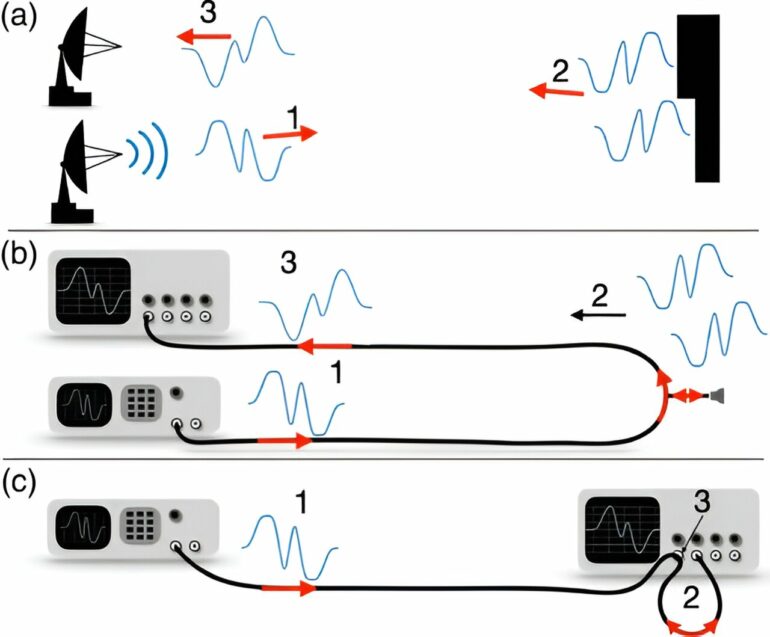New interference radar functions employed by a team of researchers from Chapman University and other institutions improve the distance resolution between objects using radar waves. The results may have important ramifications in military, construction, archaeology, mineralogy and many other domains of radar applications.
This first proof-of-principle experiment opens a new area of research with many possible applications that can be disruptive to the multi-billion dollar radar industry. There are many new avenues to pursue both in theory and experiment.
The discovery addresses a nine decades-old problem that requires scientists and engineers to sacrifice detail and resolution for observation distance—underwater, underground, and in the air. The previous bound limited the distance estimated between objects to be one quarter of the wavelength of radio waves; this technology improves the distance resolution between objects using radar waves.
“We believe this work will open a host of new applications as well as improve existing technologies,” says John Howell, the lead author of the article published today in Physical Review Letters. “The possibility of efficient humanitarian demining or performing high-resolution, non-invasive medical sensing is very motivating,” he adds.
Howell and a team of researchers from the Institute for Quantum Studies at Chapman University, the Hebrew University of Jerusalem, the University of Rochester, the Perimeter Institute and the University of Waterloo have demonstrated range resolution more than 100 times better than the long-believed limit. This result breaks the trade-off between resolution and wavelength, allowing operators to use long wavelengths and now have high spatial resolution.
By employing functions with both steep and zero-time gradients, the researchers showed that it was possible to measure extremely small changes in the waveform to precisely predict the distance between two objects while still being robust to absorption losses. To an archaeologist, this creates the ability to distinguish a coin deep underground from a pottery shard.
The breakthrough idea relies on the superposition of specially-crafted waveforms. When a radio wave reflects from two different surfaces, the reflected radio waves add to form a new radio wave. The research team uses purpose-designed pulses to generate a new kind of superposed pulse. The composite wave has unique sub-wavelength features that can be used to predict the distance between the objects.
“In radio engineering, interference is a dirty word and thought of as a deleterious effect. Here, we turn this attitude on its head, and use wave interference effects to break the long-standing bound on radar ranging by orders of magnitude,” says Andrew Jordan, director of Quantum Studies at Chapman University. “In remote radar sensing, only a small amount of the electromagnetic radiation is returned to the detector. The tailored waveforms that we designed have the important property of being self-referencing, so properties of the target can be distinguished from loss of signal.”
Howell adds, “We are now working to demonstrate that it is possible to not only measure the distance between two objects, but many objects or perform detailed characterization of surfaces.”
More information:
John C. Howell et al, Super Interferometric Range Resolution, Physical Review Letters (2023). DOI: 10.1103/PhysRevLett.131.053803
Provided by
Chapman University
Citation:
New radar research overcomes nearly century-old trade-off between wavelength and distance resolution (2023, August 2)


